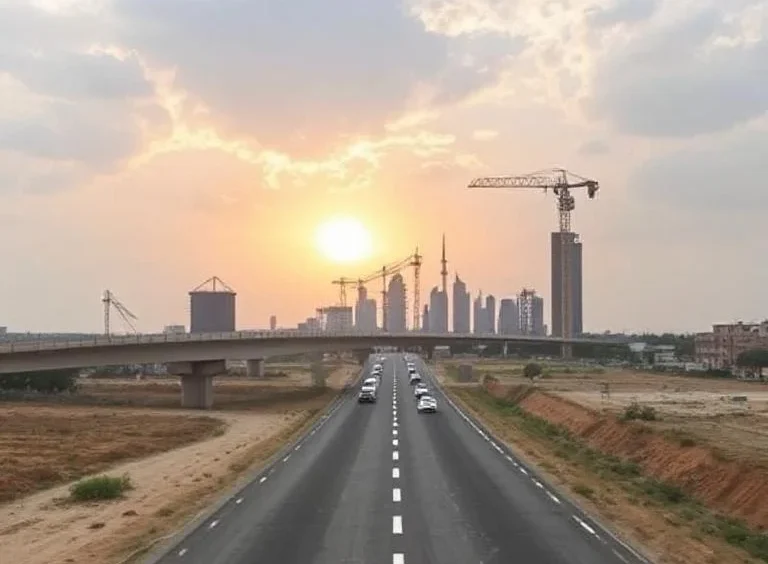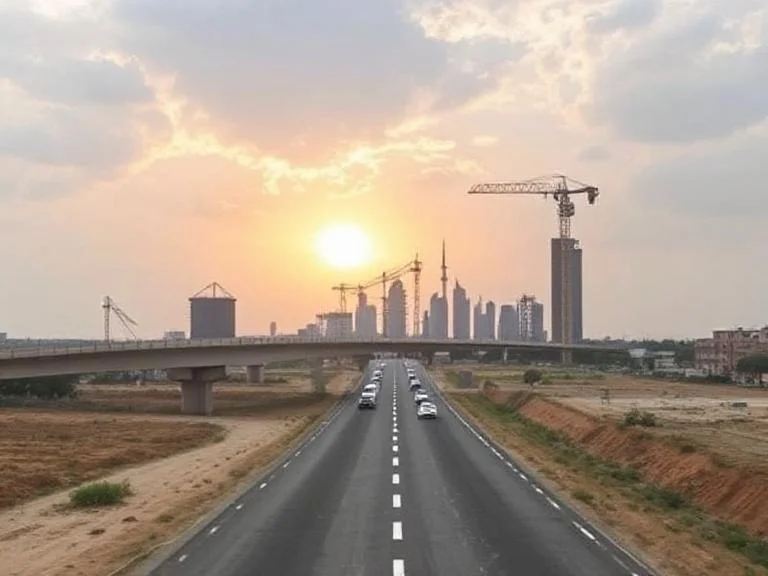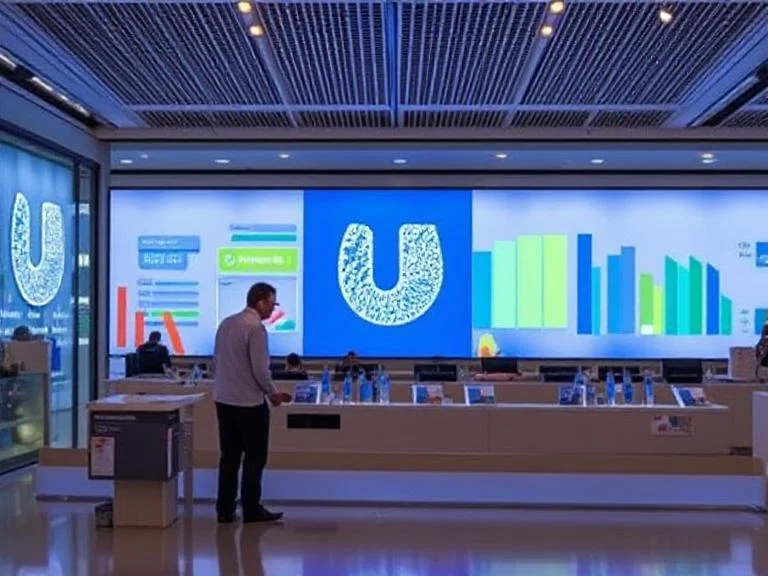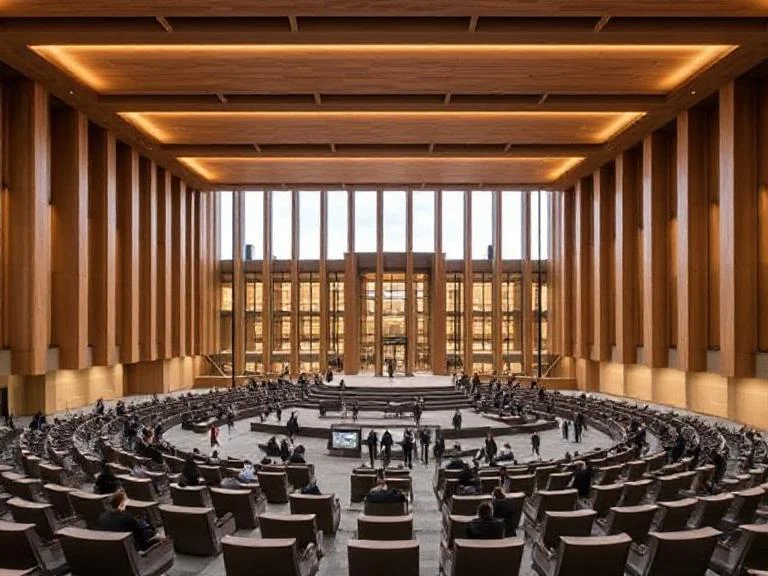Project Management Essentials of Abuja-Kaduna-Zaria-Kano Road

The project of Abuja-Kaduna-Zaria-Kano Road is a crucial transportation and component of a larger highway system from North to South. It is enhancing the safety, infrastructure, and efficiency aimed at the rehabilitation of the project. Enabling the movement of people and products from North to South and vice versa with the connecting of Nigeria to North Africa, this project plays a vital role. To accommodate the future growth in the economic activities and the traffic along the corridor this project was implemented. This road is a critical carriageway that links parts of Nigeria with the North and cuts through the Kano States.
Background and Purpose:
In Northern Nigeria, the Abuja-Kaduna-Zaria-Kano Road serves as the vital transportation line that connects different economic centers as well as facilitates travel or trading activities. Due to the heavy traffic, the road has deteriorated and is insufficiently maintained. The original scope of this project is to be completed in November 2021 to deliver value-driven solutions. The carriageway is almost 375.9km long based on the three sections. Section one is 165.5km, section two is73.4km, and section three is 137km long that cuts the Kano and Zaria.
The purpose of the project is to upgrade the infrastructure of the road and rehabilitate it to enhance capacity as well as the safety of transportation. Even with the improvement of efficiency of transportation for trade and travel, this project has been developed. It forms a critical part of the larger highway system between the North to South and vice versa for the trade of products and traveling of the people. It is also known as the critical carriageway to enhance the safety of people, transformation, and products by moving from one area to another connecting by this road.
Objectives:
Following are some objectives of the project of Abuja-Kaduna-Zaria-Kano Road that help to understand the purpose of the project.
- Upgrading the Road Surfaces:
As the infrastructure rehabilitation, the purpose of this project is to upgrade all the surfaces of the road and repair the bridges. To improve the system of drainages and ensure the durability of the travel and trade opportunities, this project has established.
- Expansion of Road Capacity:
To enhancement of the capacity of road expansion is another objective of this project. Because it reduces the overall congestion as well as accommodates the growth of future traffic. By connecting Nigeria to North Africa, the road capacity can be enhanced through the implementation of this road.
- Modern Traffic Management Systems:
Developing the proper safety improvements is another goal of the project of Abuja-Kaduna-Zaria-Kano Road. By implementing the management of a modern traffic system and marking the road to raise the safety for all road users, this project is very beneficial.
Deliverables the Project:
- To implement the measures of safety through the traffic management system and proper safety improvements for all road users.
- To improve of overall conditions of roads and raise the capacity to manage the higher volumes of traffic that help to manage the people and products moving from North to South or South to North.
- To complete the rehabilitation or restoration of the Abuja-Kaduna-Zaria-Kano Road’s infrastructure is beneficial for the moving of products and people by connecting various states.
Project Triangle Parameters:
Different key parameters of the project triangle help to understand the clear vision of the project’s success.
- Scope:
The scope of the Abuja-Kaduna-Zaria-Kano Road Project is to upgrade the length to 375.9km by focusing on the key infrastructure consideration of the environment, and the safety of the people by the traffic management system. A good infrastructure motivates the project to achieve all the objectives and deliverables effectively.
- Timescale:
The project is scheduled to be completed in November 2021, but the revised scope of the project is attained as the overall completion of the road across the three sections in the 2nd quarter of the year 2023. The road will have raised the capacity of bearing and completing in the year 2026.
- Budget:
Due to the government budget allocation, public and private partnerships, and international loans the project has been funded. The budget allocated for materials, construction, and equipment or labor. Proper budgeting techniques help the project achieve its aims and fulfill all the entire goals.
- Quality:
The standards of quality adhere to the national road construction which is related to the guidelines as well as regulations of safety. It ensures the durable infrastructure and the management of the traffic system that affects the people and the movement of the products.
Effective Project Control:
To ensure the effective control of the project, the manager could effectively implement these practices.
Project Planning:
By developing a detailed plan of the project and outlining each task with the requirements of resources, the project manager develops the proper techniques. By using the tools like Gantt Charts and the critical path the overall time to complete the project and making the list of resources can be done effectively. The duration of completed the project and the number of tasks or resources can be analyzed by using such tools.
Risk Management:
The development of risk mitigation strategies addresses the issues and the recent challenges proactively that help to meet the objectives of the Abuja-Kaduna-Zaria-Kano Road project.
Communication:
By establishing clear communication channels with all the stakeholders like local communicates, government, and the public, the project manager can regularly update the inspection. The project manager can monitor the milestones and resolve the emerging challenges that affect the overall growth of the project. Communicating with the stakeholders is a vital element that getting accurate feedback from peers.
Reporting:
By using the advanced performance metrics and the KPIs – Key Performance Indicators, the project manager of Abuja-Kaduna-Zaria-Kano Road can track the progress against the objectives of the project. Generating the detailed structure of the project and reporting the challenges the project manager can provide the proper recommendations to update the current issues.
Importance of Stakeholder Engagement:
The management of stakeholders and their engagement is important in managing the project’s part which helps to lead the entire performance and boost the strategic growth of the project.
Identifying the Needs and Expectations of Stakeholders:
Stakeholders like agencies of government, businesses, and communities have varying expectations and interests related to the outcomes of the project. Engagement with the stakeholders allows the managers of the project to identify the needs and align the goals of the project it the key expectations that reduce some of the potential conflicts.
Developing Trust and Support:
The engagement of stakeholders builds trust as well as fosters positive relationships among the participants of the project. When the stakeholders feel valued then they are more likely to provide full support to the project. Advocating the success towards the project’s scope helps to reach the entire practices of the businesses.
Managing Risks and Expectations:
Stakeholder engagement helps to manage the key expectations related to the timelines of the project, objectives, and managing certain costs. The engagement of stakeholders in project management allows managers to communicate some potential risks as well as uncertain transparency to prevent misunderstandings regarding the mitigation of change. The management of risk and ensuring the project’s success are the motives of building the stakeholders’ success towards the business directions.
Important for Project Managers to Understand their Environmental Context:
Environmental Impact Assessment:
The projects have strong or significant environmental impacts like habitat destruction and the reduction of depletion. By understanding the contact environment through Environmental Impact Assessment, the project managers can have strong access to obtaining the necessary permits. EIAs can help to analyze the environment that leads the classified operations in the future toward the strategic response.
Resource Management:
For the success of the project, natural resources like water, energy, and land are important elements. To understand the context of the environment, resource management helps project managers assess the availability of resources, build an efficient plan, and reduce waste generation. It is one of the important environmental contexts for the success of the project.
Risk Management:
Various environmental forces like the change of weather and environmental policies affect the progress of the project. Posing the risk to the project timelines, leading the outcomes, and managing the cost, the project managers can understand the risks of project resilience. Developing the proper contingency plans, and overall activities of project managers towards leading the strategic operations becomes valid in the future. Timelines and costs of the project can be managed through the development of advanced resources and updating the entire possibilities that lead the advanced eras of success.
Identify and analyze the Abuja-Kaduna-Zaria-Kano Road Project’s Stakeholder Using the Power or Influence Matrix:
For identifying the key stakeholders of the Abuja-Kaduna-Zaria-Kano Road the categorization of the stakeholders based on the power/influence matrix is done regarding the ability to impose the clear activities.
Matrix of Power/Influence:
- High Power, High Influence:
The Federal Government of Nigeria and the governments of the States are the key stakeholders that higher power as well an influence on the success of the Abuja-Kaduna-Zaria-Kano Road Project. As the key authority that oversees national infrastructure projects, the roads and the federal government hold significant powers over the funding of the project. Approval of land acquisition and the coordination with the local community, and the government of state’s decisions are affected.
- High Power, Low Influence:
Local communities and the property developers of Nigeria are the main stakeholders that exist in this category. Due to the direct impact of the Abuja-Kaduna-Zaria-Kano Road Project, the overall disruptions during the environmental and construction concerns can be managed. This influence may be limited without project authorities that can be valid in the entire strategic growth.
- Low Power, High Influence:
The Engineers of the Abuja-Kaduna-Zaria-Kano Road Project and the Non-Governmental Organizations are the key stakeholders that have less power over the decisions of the project. The technical expertise of engineers plays a vital role in the construction quality of projects regarding the timeline and making the advanced resources that can be valid in the future. NGOs and advocacy groups may not directly hold the decision-making but they can influence the outcomes of the project regarding the concerns and development of the structural changes.
- Low Power, Low Influence:
The general public and the suppliers of consultation materials are the main stakeholders that have low power as well as a slow influence on the strategic decisions of the Abuja-Kaduna-Zaria-Kano Road Project. Individuals that far from the project route have less power or influence over the decisions of the project. Even individual suppliers have limited influence over the strategic decisions of the company.
Strategies of Stakeholder Engagement:
Some internal and external stakeholders of the Project that classified based on the power/influence matrix.
Internal Stakeholders:
- Project Management Team:
By conducting regular meetings with the teams, the project milestones and the allocation of resources can be done through the entire resources. So, the project management team is a vital internal stakeholder of the Abuja-Kaduna-Zaria-Kano Road Project.
- Engineers:
For continuous communication to ensure adherence and design of some specifications, the engineers are the main stakeholders that have higher influence over the projects’ decisions.
- Government Agencies:
Collaborate the meetings with government agencies to obtain the approvals and the sources of funding, the project’s success depends on internal stakeholders.
External Stakeholders:
- Local Communities or NGO’s:
Advocacy groups and Non-Government Organizations have existed in the external stakeholders that mitigate the measurement of success by having less power but a higher influence on the strategic decisions of the Abuja-Kaduna-Zaria-Kano Road Project.
- Local or State Government:
Focusing on the regulatory compliances, laws, and regulations made by the governments of the country, aligning with the local development priorities helps to manage the Abuja-Kaduna-Zaria-Kano Road’s effective stakeholder engagement and transparent decision-making.
Phases and Milestones:
Project initiation:
In this project of Abuja-Kaduna-Zaria-Kano Road, the scope of the project, objectives, and the identified stakeholders are defined in this phase. Through conducting the initial feasibility studies, it is analyzed that the main objective of this project is to provide safety and develop a traffic management system that secures funding and obtains the necessary approvals. The government either local or state with the engineers that are capable of performing the talents, and local communities are the main stakeholders that are identified in this phase.
Design Phase:
For the initiating of the project of Abuja-Kaduna-Zaria-Kano Road, the design of the road by the engineers and developing the specific plans that addressed the concerns varied through the design phase. In this phase, the project manager obtains the approvals from different authorities either the government of Nigeria or other states that are connected by the construction of this road as moving from North to South and vice versa.
Procurement Phase:
This phase of project millstone refers to the tendering process for the construction contracts by selecting contractors and negotiating them. The project manager negotiates with the contractors to analyze the estimation of the cost, material, and the proper time frame for completing the Abuja-Kaduna-Zaria-Kano Road Project. By procuring the necessary materials and resources, the current operations must be examined in the future.
Construction Phase:
To examine the project of Abuja-Kaduna-Zaria-Kano Road, this phase motivates to clear as well as prepare the proper construction sites. Culverting the installation and focus on the construction of a road that connects Nigeria to North Africa, there are different safety features with the drainage systems that are tackled.
Testing Phase:
By conducting the quality assurance as well as control testing elements, the project manager ensures compliance with the specification of design and getting the key standards of safety. After initiating the construction of the Abuja-Kaduna-Zaria-Kano Road Project, the testing was based on the final inspections as well as certifications by the experts. To analyze the specification of the design and evaluate the safety standards, the testing and commissioning phase can be done towards a better era of success.
Project Closeout:
It is the last phase of the project milestone in which the project manager of Abuja-Kaduna-Zaria-Kano Road hands over the completed sections to the authorities from the operational departments.
Key Elements of Project Plan:
Phases or Tasks:
Each row of a Gantt Chart represents the major phase as well as the task required to complete the project of Abuja-Kaduna-Zaria-Kano Road. The phases start from the initiation stage and end with the closeout stage. It is one of the necessary elements that define the description of each phase that occurred in the project plan and its entire elements.
Start and End Date:
These elements indicate the start date and the end date for each phase with the proper planning. These dates are derived from the scheduling of the project and the considering the key reliance on the availability of the resources. It shows the overall time used to start and end a particular project in a row.
Duration:
Specifying the estimated duration for each task indicates the particular time allocated based on the scope of the project, the entire level of complexity, and the constraints of the resources. The overall time between the start date and the end date of each phase refers to the duration to complete the entire project.
Reliance:
Phases are sequenced or arranged based on the reliance where certain tasks must be fulfilled before another one can begin. For this project the approval of the design is required before the process of procurement can start follows the contraction process for the entire completion of the tasks.
Purpose of Crating the WBS – Work Breakdown Structure:
A work break structure is analyzed as the hierarchical decomposing of work scope that can be project teams through accomplishing the goals of the project for creating the entire deliverable.
Defining the Scope:
Work Breakdown Structure defines the scope of the project related to the key sections of management and work packages. It is used to break the deliverables into smaller and the manageable components. For the accomplishment of valuable tasks, the use of advanced planning by breaking down the tasks is an important function.
Organized the Tasks:
WBS provides the systematic framework for organizing the asks and developing certain activities related to the reliance on other factors. It helps to coordinate the efforts, track the entire progress, and assign various responsibilities related to the entire process of completing the particular project.
Allocate the Resources:
By breaking down the large project into smaller elements, the Work Breakdown Structure facilitates resource allocation like personal equipment as well as materials. On each work page, these resources give more accurate and effective results.
Stakeholder Engagement:
WBS is the entire term structure that leads the certain roles that increase the project planning regarding certain areas towards the clear plans. Managing the stakeholders improves the organizational resources and leads to the cultivating of resources through certain activities.
Purpose and Benefits of Critical Path Analysis:
- The critical path analysis in the project’s planning estimation of project duration that increases the performance of the project.
- The project plan completion of schedule for the entire growth of certain activities that ensure better resources.
- For risk management, critical analysis helps to increase the generations to generation through the activities regarding certain behaviors in the project planning.
Importance of Risk Management in Delivering the Successful Outcomes:
For the management of the project, risk management is one of the important functions that help to increase performance and identify the prioritized tasks. For the potential threats and uncertainties, the project lifecycle can be managed through risk management activities.
The Identification of Potential Threats:
Effective risk management allows the teams of the project to identify the potential threats and key uncertainties that are important in the project. For the project of Abuja-Kaduna-Zaria-Kano Road, the delays in the approval of the environment, analyzing the weather conditions, and the unforeseen geological changes are the key activities that help to improve certain facilities.
Proactive Mitigation of Risks:
The process of risk mitigation enables the project teams to develop as well as implement some proactive strategies. For the Abuja-Kaduna-Zaria-Kano Road Project, different contingency plans could be developed for the breakdowns of equipment, labor strikes, and the shortage of materials as the risks of the project. So, the development of proactive decisions for the management of entire concerns is analyzed with sustainable practices.
Decision-Making:
With the management of risk, the project managers assess the risks and evaluate the potential impact and its likelihood. The information provides the project managers with a clearer understanding of the overall risk exposures and it can easily manage. The decisions for the Abuja-Kaduna-Zaria-Kano Road Project related to the logistic handling, material management, and investment opportunities can be managed through a risk management process.
Improve the Confidence of Stakeholders:
Different stakeholders exist in the success of the completion of the Abuja-Kaduna-Zaria-Kano Road Project. The government agencies, Local communities, and the NGOs with the state government or Engineers are the main stakeholders of this project. All of these stakeholders have a strong interest in the success of the Abuja-Kaduna-Zaria-Kano Road Project. Demonstrating robust risk management practices and raising the confidence of stakeholders, showing proactive measures to address potential setbacks.
For the processes of risk assessment, risk identification, mitigation strategies, monitoring and contouring, and the development of contingency plans, the overall risks can be managed. For developing large growth and building valuable positions, the current operations of the Abuja-Kaduna-Zaria-Kano Road Project must be supportive.
Top 5 Risks for Abuja-Kaduna-Zaria-Kano Road and Illustrate Using a Risk Matrix:
Here are some risks that facing by the Abuja-Kaduna-Zaria-Kano Road Project. With the identification of top risks, the analysis of their impact and the likelihood of the success of the project are analyzed. The environmental and regulatory delays, geological conditions, risk of community resistance, overrunning of the budget, and logistical challenges are the key challenges that affect the performance of the projects in detail.
Environmental and Regulatory Delays:
It is the risk that ensures delays in the obtaining of environmental clearances. Abuja-Kaduna-Zaria-Kano Road Project facing the issue of a lack of regulatory delays that affect the approval of the project and its timelines. Even the overall cost of the project can be affected by this risk. Abuja-Kaduna-Zaria-Kano Road Project must analyze the environmental delays that help to coordinate strategic thinking and address the possible eras of success regarding the change.
Geological Conditions:
It is the risk for the Abuja-Kaduna-Zaria-Kano Road Project that relates to unforeseen geological changes due to unstable ground and the lack of resources for formations. This risk affects the construction process and raises the overall cost of this road project. Due to the lack of geological surveys, the project manager faces the issue of bad weather conditions as well as the entire activities that must be improved in the valid eras.
Risk of Community Resistance:
Due to the opposition from the local communities related to the land acquisition, activities of construction, and leading to protests, the delays of the project can be raised in the future. Due to the lack of resources and insufficient funding, the Abuja-Kaduna-Zaria-Kano Road Project faces the risk of community resistance that affects the overall performance of the project.
Overrunning the Budget:
With the uncertain enhancements in the overall costs of construction, inflation, and the delays in the development of funding overall budgets can be raised regarding the financial constraints that address the entire positions of the business. There are less effective cost estimation techniques that affect the entire performance of the Abuja-Kaduna-Zaria-Kano Road Project.
Logistical Challenges:
Abuja-Kaduna-Zaria-Kano Road Project faces difficulties in the management of logistics like handling the materials and managing the equipment through transportation which affects the overall progress of the project. It develops contingency plans related to the alternative routes of supply that affect the progress of the project.
The talented, expert and capable engineers are selected as the most important elements that help to fulfill the construction phase of the project. By conducting the reviews of the post-construction project and evaluating the outcomes, the project manager can motivate the engineers and other related parties toward success. Documenting the product outcomes and evaluating the lessons learned from each phase of the project can be evaluated in this last closeout section. Through implementing the unbiased criteria, the current activities need to be examined in the future that maintain the strategic change.
Project Management Behavior Promote the Organizational Success in the Context of the Abuja-Kaduna-Zaria-Kano Road Project:
In the context of the Abuja-Kaduna-Zaria-Kano Road Project, the behavior of project management optimizes the key resources and their utilization related to human resources, material handling, and financial resources. By allocating the resources effectively, the Abuja-Kaduna-Zaria-Kano Road Project can improve overall productivity resulting in the enhancement of the project’s performance.
The behavior of project management can affect the organization or Abuja-Kaduna-Zaria-Kano Road Project in different ways, like improvement of the productivity and the efficiency of the project, the management of entire resources, and ensuring all the members of the teams are working related to the same goal. Even to complete the Abuja-Kaduna-Zaria-Kano Road Project and achieve its success, the projects are managing resources effectively and raising the overall engagement it the stakeholders. The stakeholders of the company must be analyzed to develop clear strategic changes in the future.
ADKAR Model:
Awareness, desire, knowledge, ability, and reinforcements for the Abuja-Kaduna-Zaria-Kano Road Project can be analyzed through the development of certain practices and implement the change in the entire project.
- Awareness:
Abuja-Kaduna-Zaria-Kano Road Project ensures the stakeholders understand the needs for the construction of the road and evaluate its potential benefit. First of all, the project manager must analyze the needs for this riad project and then initiate the overall construction process to complete the project and achieve all the goals directly.
- Desire:
Creating the desired among the stakeholders that actively support as well as participate in the detailed activities of the project must be analyzed in the change management process. These elements for the Abuja-Kaduna-Zaria-Kano Road Project help to initiate the construction process of the road to engage with the stakeholders.
- Knowledge:
By providing the skills as well as the knowledge that are important through the workshops to carry out all the tasks of the project carefully, the objectives of the project can be achieved. The technical skills of the engineers and the other skilled staff must be required to complete the entire performance of the Abuja-Kaduna-Zaria-Kano Road Project regarding the entire era of active learning.
- Ability:
This element of change management supports the stakeholders by applying the new skills and abilities to directly contribute to the Abuja-Kaduna-Zaria-Kano Road Project’s success. Engineers must develop effective technical skills to estimate the cost, handle the resources, and manage the entire materials related to the business concerns.
- Reinforcement:
Reinforcing the positive behaviors of the stakeholders that r aligned with the success of the Abuja-Kaduna-Zaria-Kano Road Project, the overall commitment and success of the project increased. For the implementation of change management in this road project, the entire strategic responses must be supportive in the future.
Tuckman’s Stages of Group Development:
- Forming:
In this step, the Abuja-Kaduna-Zaria-Kano Road Project established the goals, organized the roles, and aligned all the responsibilities to clarify some expectations as well as promote the cohesion of the team that is impactful for the teams’ success.
- Storming:
By managing technicities from the perspective of conductions about the Abuja-Kaduna-Zaria-Kano Road Project that fosters decision-making, the teams for managing the project can be developed effectively. Involving them in the decision-making process is important for the management of business concerns.
- Norming:
Developing the norms as well as protocols for communication, and the activity of problem-solving enhances the overall effectiveness of the team that helps to integrate the possible changes. For the Abuja-Kaduna-Zaria-Kano Road Project’s success, the teams’ effectiveness is an important element.
- Performing:
By achieving a higher level of productivity as well as synergy as the teams’ effectiveness the milestones of the Abuja-Kaduna-Zaria-Kano Road Project can be achieved. With skilled team members, the outcomes of the project must be achieved in the process of construction, traffic management system, and safety purposes.
- Adjourning:
This stage ensures the reflection on the outcomes of the project, celebrates the key achievements, and conducts the proper lessons learned in the Abuja-Kaduna-Zaria-Kano Road Project. Motivating the team members to fulfill the goals of the entire project must be addressed regarding the specific operations in the current markets.
Management Behaviors’ Contributions to Team Success or Fostering the Culture of Equality, Diversity, and Inclusion:
Within the organization, to promote the culture of equality, diversity, and inclusion, there is a specific behavior of project management required not only to support the success of the team but also to ensure the valued behavior of team members. It empowered the working behavior of all the team members and increased the organizational Abuja-Kaduna-Zaria-Kano Road Project’s success.
Inclusive Leadership:
The behavior of inclusive leadership indicates active listening skills for diverse perspectives and encourages the overall participation form all the members of the teams. It promotes the overall sense of belonging regarding the instant operations of the Abuja-Kaduna-Zaria-Kano Road Project which ensures the equitable distribution of all the responsibilities.
Communication:
By openly and transparently communicating the goals of the project, exceeding the expectations, and mitigating the challenges, the project manager shows positive behavior within the organization to manage the entire project. The use of inclusive languages in communication and accessibility to all the members of the teams directly provides opportunities for teams’ success within the organization.
Equitable Resource Allocation:
By fairly distributing the project’s resources like budget, time, and cost, the skills of the teams can be developed. It relates the career advancement opportunities towards business growth and leading effective changes.
Example:
Imagine a project manager who manages diverse teams in the construction phase of the Abuja-Kaduna-Zaria-Kano Road Project. So, fostering a culture of equality, diversity, and inclusion through inclusive leadership, transparent communication, and equitable resource allocation can be done through actively listening to the feedback. The project manager provides regular feedback from engineers and the local community during the meetings of the project and ensures the subcontracting opportunities that are vital for minority-owned enterprises. So, the project manager develops the inclusion, diversity, and equality components within the project’s success.



















































